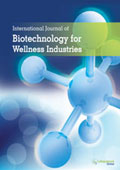ijbwi
Abstract : An Adjunct Treatment Reverses Insulin-dependent (Type 1) Diabetes in a Teenager
|
|
Abstract: Globally, more than 30 million people suffer from diabetes mellitus type 1 (T1DM) characterized by pancreas producing little or no insulin hormone to facilitate glucose entering cells for energy production. T1DM patients tend to suffer a higher overall rate of atherosclerosis, cancer, and end-stage renal failure. No drug or surgical therapy seems to halt its annual upward trend amongst children and young adults. Consequently, a significant number of sufferers turn to complementary or alternative therapies for help to arrest this chronic endocrine condition. This paper discusses how a well-designed evidence-based dietary and nutritional therapy with some lifestyle modifications might offer a solution for this highly complex autoimmune disorder. The treatment outcome demonstrated a partial regeneration of pancreatic islet beta cells with substantial improvement for all relevant serum and urine markers tested. Keywords: Type 1 diabetes mellitus, insulin-dependent diabetes, juvenile diabetes, autoimmune disorder, nutritional therapy.Download Full Article |
Abstract : An Adjunct Treatment Reverses Insulin-dependent (Type 1) Diabetes in a Teenager (2)
|
|
Abstract: Globally, more than 30 million people suffer from diabetes mellitus type 1 (T1DM) characterized by pancreas producing little or no insulin hormone to facilitate glucose entering cells for energy production. T1DM patients tend to suffer a higher overall rate of atherosclerosis, cancer, and end-stage renal failure. No drug or surgical therapy seems to halt its annual upward trend amongst children and young adults. Consequently, a significant number of sufferers turn to complementary or alternative therapies for help to arrest this chronic endocrine condition. This paper discusses how a well-designed evidence-based dietary and nutritional therapy with some lifestyle modifications might offer a solution for this highly complex autoimmune disorder. The treatment outcome demonstrated a partial regeneration of pancreatic islet beta cells with substantial improvement for all relevant serum and urine markers tested. Keywords: Type 1 diabetes mellitus, insulin-dependent diabetes, juvenile diabetes, autoimmune disorder, nutritional therapy.Download Full Article |
Abstract : Highly Efficient Extraction of Aromatic Compounds from Houttuyniacordata thumb by Cryogenic Grinding Techniques
|
|
Abstract: The current study was focused on the extraction of essential oil from Houttuyniacordata thunb (HCT) by using different solvents (ethyl acetate, ethanol, and n-hexane) using cryogenic grinding techniques (CGT). The influence of the storage time of the HCT extract on the volatile components was investigated. This paper also discussed and interpreted the mass spectral fragmentation patterns for the three new compounds (undenoyl acetaldehyde, dodenoyl acetaldehyde, and decyl-imine acetaldehyde). The results showed that the extractability of essential oil obtained by CGT using ethyl acetate as an extractant was as high as 1.14% and the content of decanoyl acetaldehyde in the essential oil was as much as 55.96%, much higher than the previously reported values. It was suggested that the oxidation and decomposition of those unstable components were effectively reduced when the essential oil was extracted by CGT. The content of decanoyl acetaldehyde in the HCT extractant remained constantly when using ethyl acetate as a solvent in the process of storage, while using ethanol as a solvent, the content of decanoyl acetaldehyde decreased rapidly as the storage time increased. The author proposed that the ethanol reacted with decanoyl acetic acid and formed decanoyl acetic ether, which accelerated the decomposition of the decanoyl acetaldehyde. Keywords: Houttuyniacordata thumb, cryogenic grinding techniques, essential oil, decanoyl acetaldehyde, mass spectra.Download Full Article |
Abstract : The Potential of Hydrocyclone Application for Mammalian Cell Separation in Perfusion Cultivation Bioreactors
|
|
Abstract: Hydrocyclones have been traditionally applied for long times in many industrial fields, such as in mineral processing and mining, chemical and petrochemical, and food industries. They have many characteristics that favor them as separation system in solid/liquid, gas/liquid and liquid/liquid processes. During the last two decades, they have been evaluated for their possible application in the separation of microbial and mammalian cells. Nowadays, mammalian cells are widely used for the production of a large number of valuable therapeutic proteins, antibodies, hormones and vaccines. This review highlights the potential of the application of hydrocyclones for mammalian cell separation in continuous perfusion biorecators. The discussion will cover the structure of hydrocyclone, mechanism of separation inside hydrocyclones, different theories describing the separation process, as well as the effect of changing different geometrical variables on the efficiency and performance of the separation process. Furthermore, we will focus on the latest developments achieved in the field of separation of living cells in both laboratory and pilot plant cultivation scales. Keywords: Hydrocyclone, cell separation, mammalian cells, perfusion bioreactors, separation efficiency.Download Full Article |























